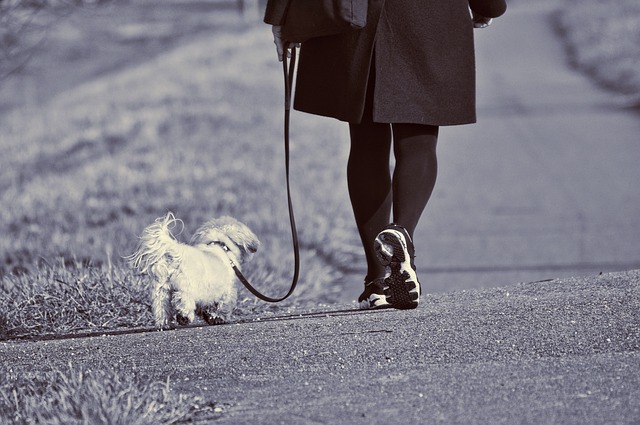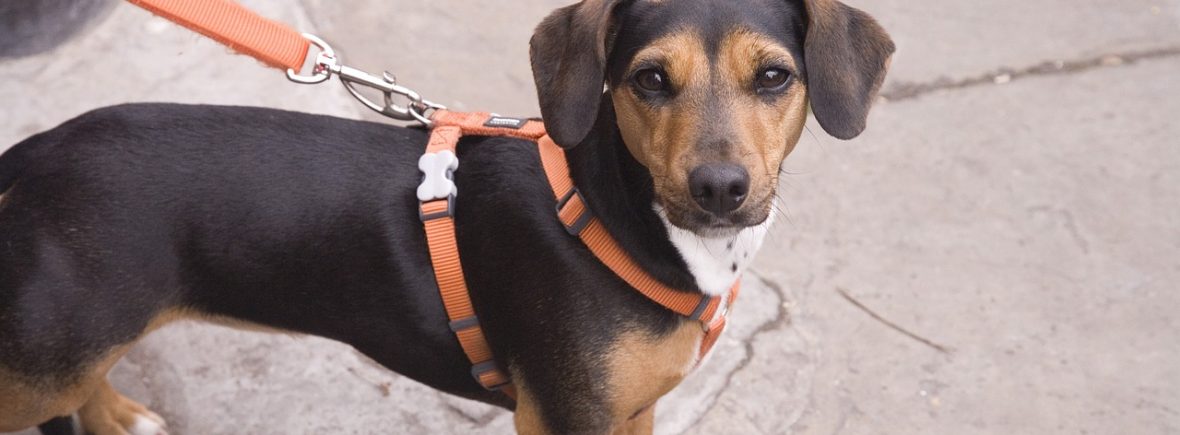Guide to Choosing a Dog Lead
Flat and rope leads

Flat leads come in many different materials and are usually between 4 and 8 feet long. They clip on to your dog’s collar. There are also rope leads, which tend to be very strong (perhaps more suited to larger dogs). When buying a flat lead, or any lead for that matter, it’s important to choose a lead that is appropriate for the size of your dog. Larger, stronger dogs require wider or thicker leads. If you are not sure about the size of your dog, use this as a rough guide:
- Small or toy dogs – 1-10 kg
- Medium dogs – 11-26 kg
- Large dogs – 27-44 kg
- Giant dogs – 45 kg+
You should ideally weigh your dog every 6 months at your local vet.
Flat and rope leads provide the highest level of control and therefore safety. Shorter leads offer more control and so are best for training young dogs.
Bungee / Stretchy dog leads
When you try to correct your dog by pulling on this type of lead, you are not giving them instant feedback and so you are not teaching them anything. Also, due to the stretchy nature of these leads, there is a slight delay on being able to move your dog out of danger. We do not recommend this type of lead.
Retractable dog lead

Retractable leads are extremely popular. They give you the ability to let your dog walk up to 30 feet away from you while still maintaining some degree of control. The handle automatically retracts or extends the lead as your dog moves closer or further away. You can hold down a button to prevent the lead from extending or retracting in order to make it fixed-length. However, there are downsides. They are not good for training as you do not have enough control and your dog thinks it can wonder off and do its own thing. From a safety point of view, the string-like rope can become frayed and it is not uncommon for larger dogs to snap the string, which may create a dangerous situation. The longer lead poses problems such as tangling around your dog’s legs and people’s legs too.
Slip dog lead

Slip leads are a type of rope lead that has a metal ring at one end that allows you to slip a loop of rope around your dog’s neck. Unlike other flat or rope leads, it does not attach to your dog’s collar. It is important to be aware that slip leads, if used incorrectly, can harm your dog because they can become tight around your dog’s neck, which can lead to choking etc. Having said that, some dog trainers swear by them and they can advise you on how to use them correctly. Slip leads can also be handy for quickly gaining control of a dog that is off lead. For example, an escaped dog or a dog that is a danger to itself or other dogs.
Collars vs harnesses
Dog leads can be attached to a collar or harness. If you have a medium or small size dog, a harness may be the best option for attaching a lead. Attaching a lead to a dog harness means that pressure is not applied to your dog’s neck when pulling them towards you (making them more comfortable). They also give you more control because you can more easily pick up a small dog wearing a harness, which means that your dog is safer. Harnesses can be more expensive, but they can be worth the investment.

